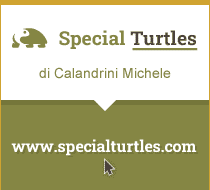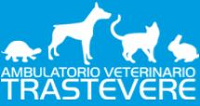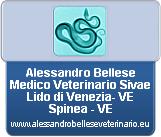Pina is a 7 years old Testudo hermanni boettgeri, female, taken by me in summer 2012 with a male of the same species. When she got to me, she was not eating much, she gave only a few bites of food that was given, without ending her portions. Her weight was about 189 grams and her feces were flabby and full of mucus.
Pina
Initial therapy
Flow to the vet, we have analyzed the feces. Pina was full of parasites and she also had a strong conjunctivitis. Wormed, has been taken back home, but the amount she ate was always the same and the weight did not increase.
Wrong therapies
With weeks, Pina became more and more nervous, trying to climb over the fence and get out all the time. Her feces remained flabby and full of mucus. She looked weak and if turned upside down, she did not even have the strength to turn around.
Flow to the vet, he made an X-ray, which has not yielded results.
X-Ray
Shortly after the X-ray, it was time for hibernation, but Pina has not been able to spend the winter outdoors, since her weight would have not allowed her to overcome it.
The hospitalization
After bringing Pina inside a terrarium, she immediately started to get sick, to drop about 39 grams, to get down to 160 grams.
The vet took it for more than a month in his clinic, performing therapies and, for a short period, even forced feeding.
Once back home, Pina had returned to her 189 grams, but she used to ate just fruits, and a few bites. For a few days, the feces were always flabby, but less mucilaginous.
Outside again
With the incoming of spring, Pina was taken back outside, but even the sun and the higher temperatures have not helped her feeling better.
She started to eat a little more, but as soon as she saw a bowl with a drop of water, she ran for drinking for several minutes. She ate a little as she drank a lot. Weight: always around 189-200 grams. The feces were back at the initial stage.
Deeper investigations
With the incoming of summer, after further analysis of the feces, collected over several days, it was decided, in consultation with the veterinarian, to do a blood test for a biochemical examination and a blood count.
These are the values out of range for the biochemical examination:
| Exam | Value | Value min | Value max |
| Glycemia | 143 | 20 | 113 |
| Na | 154 | 133 | 140 |
| P | 2,6 | 3,7 | 4,3 |
| PT | 3,1 | 4 | 6,5 |
| ALB | 0,8 | 1,8 | 3,4 |
| Ca | 10,6 | 14 | 15 |
These are the values out of range for the blood count:
| Exam | Value | Value min | Value max |
| Heterophile | 50 | 0,7 | 3,4 |
| Lymphocytes | 50 | 0,4 | 3,4 |
| Polychrome Thread Index | 1 | 2 | 3 |
| Leukocytes | 0,5 | 2,5 | 5,9 |
| HTC % | 22 | 25 | 33 |
These values have led us to think that she had a bowel problem, she practically did not absorb food she ate: Pina’s feces contained undigested food. In short, her intestines did not process food.
The curative therapy
After these tests, the vet felt he had to make a one-week therapy with antibiotics and anti-inflammatory for the gut.
In the meanwhile, Pina had stopped eating. The vet has integrated the therapy with B vitamins, carnitine and a freeze-dried food to be rehydrated and to be given up to five times a day orally, with a syringe with no needles on it, just a silicon tube.
At the end of the week of therapy, Pina was better, she ate a little more, but anyways she drank a lot. The vet thought it was best not to interrupt therapy and dispense the same drugs for two other weeks.
At the end of the second week of therapy there were not striking improvements, so the vet decided to remove the freeze-dried food from the therapy, and at the same time he inserted a drug to kill any present parasites in the intestine, which can not be detected through fecal examination.
This last drug was dispensed for the last week, with the antibiotic and the anti-inflammatory.
During the dispensing of this last drug, Pina was immediately better, even after a couple of doses. Her feces were well formed, they no longer contained undigested food and mucus was gone.
Happy Ending
After the third and final week Pina ate and, day by day, I even increased her portions.
In a couple of weeks after the therapies, Pina had begun to eat radicchio, chicory, dandelion, escarole and trumpet vine( Campsis Radicans ) and Hibiscus flowers.
About a month after the end of the treatment, Pina fluctuates between 256 and 262 grams and keeps her weight.
---
A heartfelt thanks goes to the veterinarian Alessandro Paini, who has followed all the therapy for Pina closely, trying, like me, to make her feel good.
Thanks also to all of those users of this very forum who have followed the story and who were always ready to lend a hand, especially Rughis, Turtlej, Marconyse, Maura72, Fbolzicco, Badail16, Doriana, Lucio78, Platysternon, Drakul, Leonida89, Mokimax , Dana, MatteoV, adriano72, augusto73.
************************************************** ***************
Originally written by: Ugo
Translated by: Ugo
 Benvenuto su Tartarugando, il forum tematico specializzato nell'allevamento di tartarughe e di altri rettili.
Benvenuto su Tartarugando, il forum tematico specializzato nell'allevamento di tartarughe e di altri rettili.







 Elenco delle sezioni
Elenco delle sezioni Elenco delle Categorie
Elenco delle Categorie Nuvola Tag
Nuvola Tag



 Articoli recenti
Articoli recenti